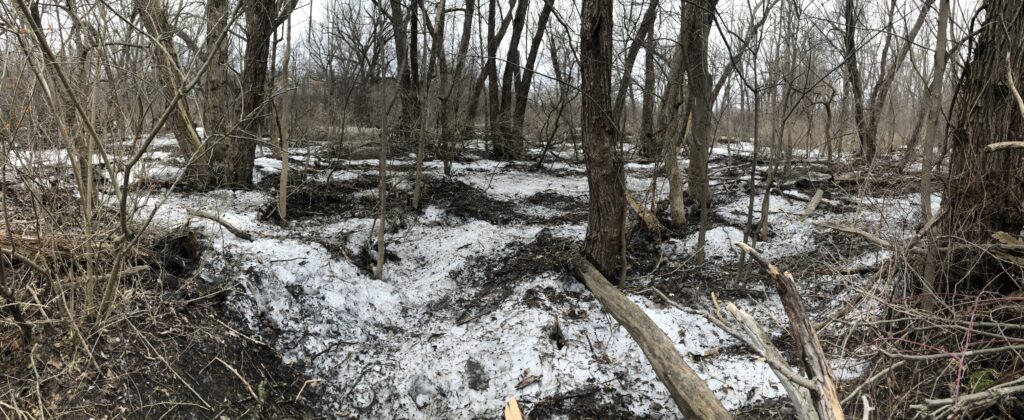This spot is a hardwood forest with no conifers to be seen. In the spring and summer the deciduous trees provide shade and habitat for the plants and mammals that live in the area. In the winter, the trees are barren. During my visit, the snow was melted so much that it was impossible to distinguish tracks through the crunchy, textured sheets of ice. In the mud around the entrance to the forest I saw some deer tracks. There were no signs of birds in the area, I didn’t even see any nests in the trees. However, this provided an incredible opportunity to see into the subnivean zone. In many spots I was able to observe holes in the ground which must be dens, connected through the subnivean zone like a neighborhood.

I think what might happen in this forest is that the creek which runs through it(separating it into two distinct sides) actually overflows and freezes along the lowest areas in the forest. I have seen this overflow happen when I have visited this location in the fall. There are really no distinct changes in elevation(unlike my hilly spot in Vermont). I was able to identify three of the focal tree species we have learned in class, Red Maple, Red Oak and White Oak. I saw a variety of trees that I tried to identify using online databases and my own inferences based off of the focal species. I think I saw both Black Walnut and Walnut Oaks. I also believe I saw Hybrid Poplar and Black Birch. I spotted some small plants which I used Seek to identify as White Avens and Garlic Mustard. These plants are responsible for some of the small wildflowers I see in the summer. Functionally, this forest may appear comparable to my site in Burlington, but the ecosystems are clearly very different.
